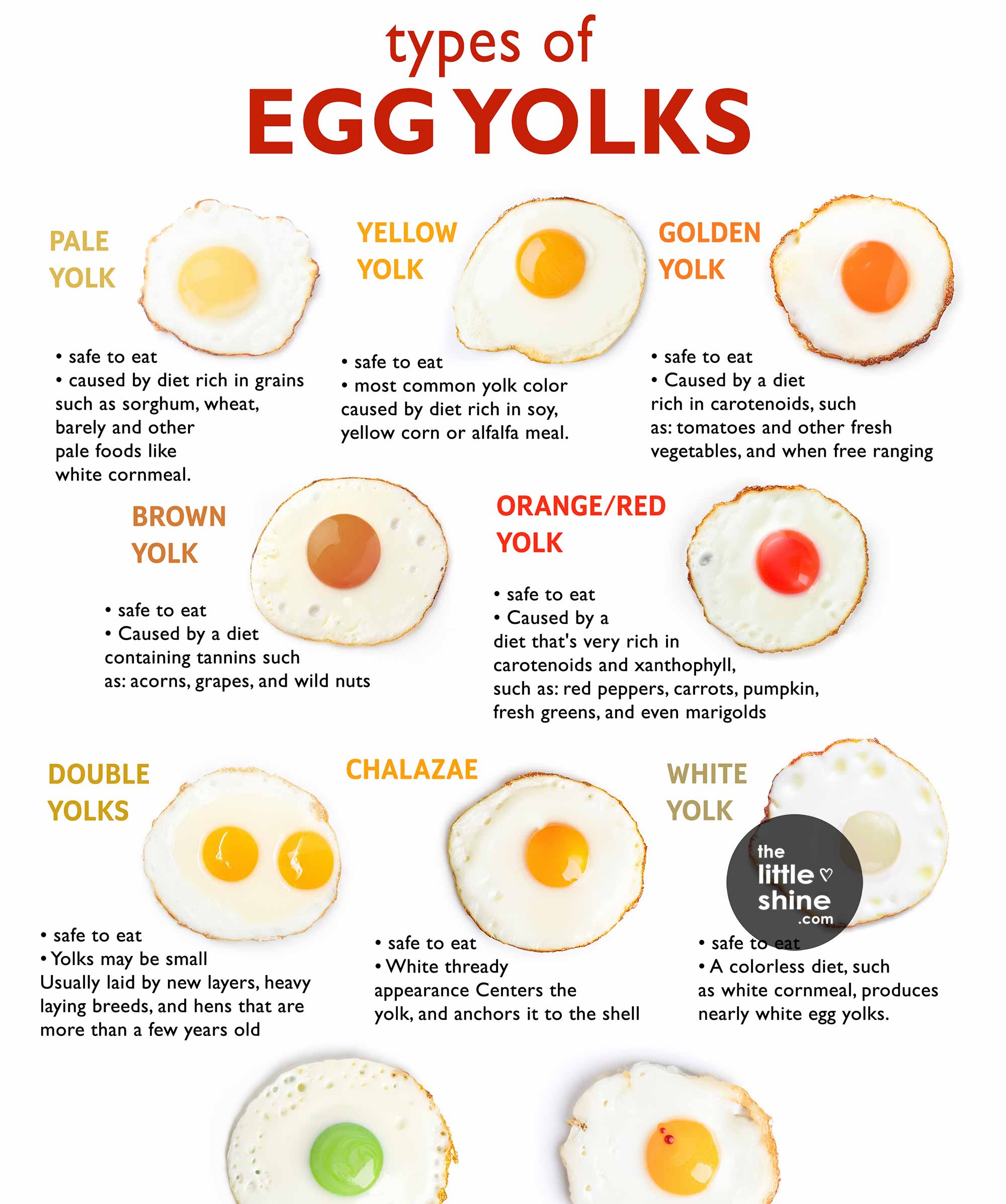Eggs are one of the most common items served for breakfast around the world, while eggs in general are also a commonly relished food item for even other meals.
They are rich in protein, vitamins, minerals and are highly nutritious. They are also heart healthy if eaten in moderation, can help one’s “good” cholesterol levels and are also rich in antioxidants.

So, I’m sure that since many of us are egg-eaters, you’ll would have come across different instances wherein your eggs have had yolks that are unusually orange in color, may have a red or brown spot, sometimes they might have been green or even brown yolks (yes this is real, and they’re safe to eat!) and some eggs might have even had double yolks too!
Well, what do you do in these unusual cases when you’ll find such egg yolks? Do you throw out the egg? Some of you might have, but it wasn’t really needed, let me tell you why right here in this article.
Let’s talk about the different types of egg yolks you may come across and whether or not they’re safe to eat.
Egg Yolk Colors Chart
1. Yellow Yolk
Safe to consume: Yes
Yellow yolks contain lesser amounts of xanthophylls and omega-3 fatty acids. They are got from hens that have a diet rich in soy, corn, alfalfa meal etc.
2. Orange Yolk
Safe to consume: Yes
Orange yolks are got from hens that consume carotenoid and xanthophyl-rich foods like peppers, pumpkin etc.
3. Golden Yolk
Safe to consume: Yes
Golden colored egg yolks are rich in xanthophylls (yellow pigments) and also contain high levels of omega-3 fatty acids. They are got from hens that have diets rich in carotenoids, tomatoes etc.
4. Reddish Yolk
Safe to consume: Yes
Red colored egg yolks are rich in xanthophylls (yellow pigments) and also contain high levels of omega-3 fatty acids. They are got from eggs that have a diet rich in red-pigmented foods like bell peppers, annatto seeds etc.
5. White Yolk
Safe to consume: Yes
Pale or white yolks are nutritious and rich in omega-3. They are got from eggs that have a diet rich in grains (like wheat, barley etc). The diet type is called ‘Sorghum’.
6. Multiple/Double Yolks
Safe to consume: Yes
Yolks might be smaller in size and they are got from eggs that are young and highly productive.
7. Green Yolk
Safe to consume: Yes
These yolks are rich in its nutritional values and the color of the yolk is got because of the pant-based diet of the hen.
8. Brown Yolk
Safe to consume: Yes
Brown yolks get its color due to the diet of the hen like consumption of nuts, tannins, grapes etc. Basically, feed rich in brown pigments.
9. Yellow Yolk with a Red or Brown Spot
Safe to consume: Yes (after gently removing the red or brown spot with the tip of a knife)
Yolks with red spots are nutritious and it’s caused because of glitches during the formation of the egg. Yolks with brown spots are high in their nutritional value and the spots are caused by feeds that are rich in brown pigments.
10. Chalazae
Safe to consume: Yes
The yolk has a white thread-like tissue or membrane on the yolk. The eggs are nutritious and the tissue-like substance adds to the egg’s protein content.
FAQ: How to know if your egg has gone bad?
The best way to know whether your egg has gone bad or not is by ding the float test. Into a bowl of water, place the egg. If it sinks to the bottom, it is fresh, if it floats mid-way, it is edible, but should be consumed soon. If the egg floats to the top, it has gone bad and should not be consumed.